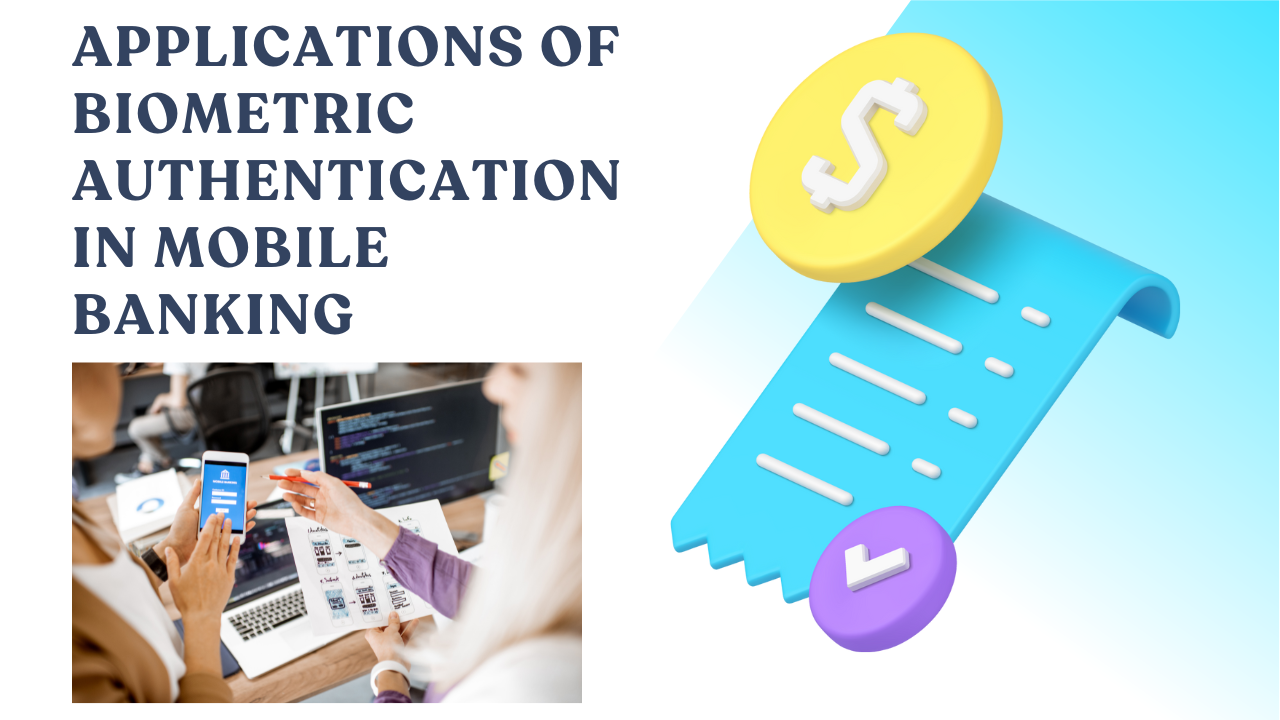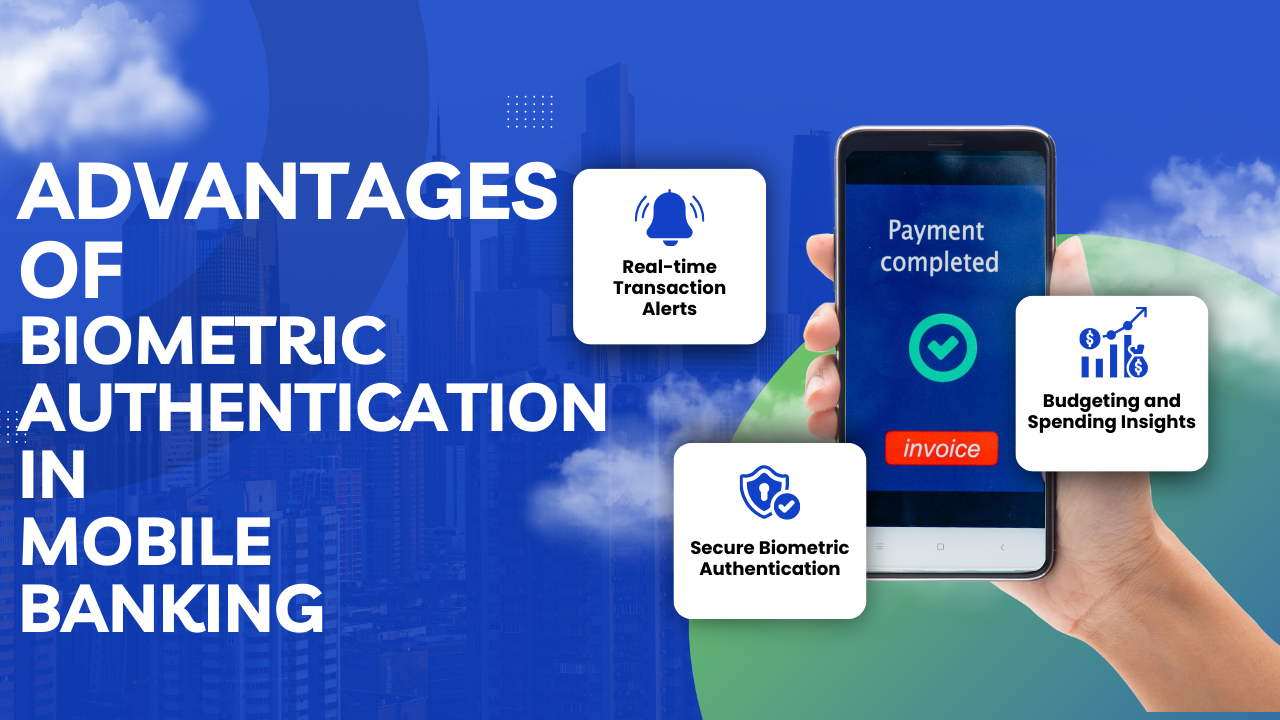In recent years, the rise of mobile banking has transformed how individuals manage their finances, offering convenience and accessibility at their fingertips. However, with this convenience comes a heightened risk of fraud and unauthorized access. As cyber threats become increasingly sophisticated, the need for robust security measures is paramount. One of the most promising solutions is biometric authentication, which leverages unique physical or behavioral characteristics to verify a user’s identity. This article explores the various applications of biometric authentication in mobile banking security, its advantages and challenges, and future trends.
Understanding Biometric Authentication
Biometric authentication refers to the identification and verification of individuals based on their biological traits. Common biometric modalities include:
Fingerprint Recognition: Scanning and analyzing the unique patterns of ridges and valleys on an individual’s fingertip.
Facial Recognition: Using algorithms to identify and verify individuals based on facial features.
Iris Recognition: Analyzing the unique patterns in the colored ring around the pupil of the eye.
Voice Recognition: Identifying individuals based on vocal characteristics and speech patterns.
Behavioral Biometrics: Monitoring patterns in user behavior, such as typing rhythm or touchscreen pressure.
These modalities can be integrated into mobile banking applications, enhancing security and providing a seamless user experience.
Applications of Biometric Authentication in Mobile Banking
Secure Login Processes
One of the primary applications of biometric authentication in mobile banking is to streamline and secure the login process. Traditional methods, such as passwords and PINs, are increasingly vulnerable to theft and phishing attacks. Biometrics offers a more secure alternative, requiring the user to provide a unique biological trait for access.
For example, many banking apps now allow users to log in using fingerprint recognition or facial recognition. This not only enhances security but also improves user experience by reducing the friction associated with remembering and entering complex passwords.
Transaction Authorization
Beyond login processes, biometric authentication is crucial for authorizing transactions. Mobile banking often involves transferring funds or making purchases, which requires additional layers of security. By integrating biometric authentication into transaction workflows, banks can ensure that only authorized users can initiate sensitive actions.
For instance, before completing a funds transfer, the app might prompt the user to authenticate their identity using their fingerprint or face. This dual-layer security (biometric plus transaction details) helps prevent unauthorized transactions even if a device is compromised.
Identity Verification
Biometric authentication is also vital for identity verification during account creation and service activation. When customers open new accounts or apply for loans through mobile banking, financial institutions must verify their identities to comply with regulatory requirements and prevent fraud.
Biometric methods, such as facial recognition or iris scanning, can be used to authenticate a user’s identity in real-time. This not only speeds up the onboarding process but also enhances the accuracy of identity verification, significantly reducing the risk of identity theft.
Fraud Detection and Prevention
Biometric authentication plays a critical role in fraud detection and prevention within mobile banking environments. By analyzing biometric data, banks can identify patterns of legitimate user behavior and detect anomalies that may indicate fraud.
For example, behavioral biometrics can monitor how a user interacts with their mobile banking app. If an unauthorized user attempts to access an account, their interaction patterns may differ significantly from the legitimate user’s established behavior, triggering alerts for further investigation.
Secure Access to Sensitive Information
Mobile banking applications often contain sensitive information, such as account balances, transaction histories, and personal identification details. Biometric authentication provides a secure way to access this information, ensuring that only authorized users can view it.
For instance, some banking apps implement biometric locks on sensitive features, requiring users to authenticate via fingerprint or facial recognition before they can access specific functions like viewing transaction details or modifying account settings.
Enhancing User Experience
In addition to its security benefits, biometric authentication significantly enhances the user experience in mobile banking. Users appreciate the convenience of quickly accessing their accounts without the need to remember passwords or go through lengthy verification processes.
This ease of access can lead to increased customer satisfaction and engagement. Banks that offer biometrics are often viewed as more innovative and customer-centric, which can enhance brand loyalty.
Advantages of Biometric Authentication in Mobile Banking
Enhanced Security
The primary advantage of biometric authentication is its enhanced security. Unlike passwords or PINs, which can be stolen, forgotten, or easily compromised, biometric traits are unique to each individual and difficult to replicate. This significantly reduces the risk of unauthorized access.
Convenience and Speed
Biometric authentication provides a quick and user-friendly alternative to traditional login methods. Users can access their banking apps with a simple fingerprint scan or facial recognition, making the process faster and more efficient.
Reduced Fraud and Identity Theft
By integrating biometrics into mobile banking, financial institutions can significantly reduce instances of fraud and identity theft. The unique nature of biometric traits makes it challenging for attackers to impersonate legitimate users.
Compliance with Regulatory Standards
As regulatory bodies tighten security requirements in the financial sector, implementing biometric authentication can help banks comply with guidelines designed to protect consumers’ personal information and prevent fraud.
Challenges and Limitations
While biometric authentication offers numerous advantages, it is not without challenges. Some of the key issues include:
Privacy Concerns
The collection and storage of biometric data raise significant privacy concerns. Users may be wary of sharing their biometric information, fearing potential misuse or data breaches. Financial institutions must implement robust data protection measures to safeguard this sensitive information.
Technical Limitations
Biometric systems can be susceptible to errors, such as false rejections or false acceptances. Factors like lighting conditions, physical changes (e.g., scars on a fingerprint), or device performance can affect the accuracy of biometric authentication.
Cost of Implementation
Implementing biometric authentication systems can be expensive. Financial institutions must invest in advanced technology and infrastructure to support these systems, which may be a barrier for smaller banks.
User Acceptance
While many users appreciate the convenience of biometric authentication, some may still prefer traditional methods due to concerns about security or a lack of familiarity. Banks must educate customers about the benefits of biometrics to encourage widespread adoption.
User Education and Awareness
As biometric authentication becomes more prevalent in mobile banking, user education is crucial to maximize its effectiveness and address potential concerns. Banks must proactively communicate the benefits and security features of biometric systems to their customers. Providing clear guidance on how to use biometrics and addressing common misconceptions can enhance user confidence and encourage adoption. Furthermore, educating users about best practices for securing their devices—such as enabling automatic software updates and recognizing phishing attempts—will complement the security measures provided by biometric systems, creating a more resilient banking environment.
Future Trends in Biometric Authentication
The landscape of biometrics is continuously evolving. As technology advances, several trends are emerging that could shape the future of biometric authentication in mobile banking:
Multi-Factor Biometric Authentication
To enhance security further, financial institutions may adopt multi-factor biometric authentication, combining different modalities such as fingerprints and facial recognition. This layered approach can provide an additional layer of protection against unauthorized access.
AI and Machine Learning Integration
Artificial intelligence (AI) and machine learning can play a significant role in improving the accuracy and efficiency of biometric authentication systems. These technologies can analyze vast amounts of data to identify patterns and enhance fraud detection capabilities.
Behavioral Biometrics
The use of behavioral biometrics, which analyzes user behavior patterns, is likely to become more prevalent. This technology can provide continuous authentication, monitoring user behavior throughout the session to ensure that the individual accessing the account remains the legitimate user.
Decentralized Biometric Systems
Emerging decentralized biometric systems may allow users to control their biometric data more securely. By storing biometric information on devices rather than centralized servers, the risk of data breaches can be significantly reduced.
Regulatory Developments
As the use of biometric authentication grows, regulatory bodies may introduce new guidelines governing its use. Financial institutions will need to stay abreast of these developments to ensure compliance and maintain consumer trust.
Conclusion
Biometric authentication represents a significant advancement in mobile banking security, offering enhanced protection against fraud and unauthorized access. By leveraging unique biological traits, financial institutions can provide a more secure, convenient, and efficient banking experience for their customers.
However, as with any technology, challenges remain, including privacy concerns, technical limitations, and user acceptance. As the industry evolves, banks must address these challenges while exploring innovative applications of biometric authentication. By doing so, they can build trust with customers and maintain a competitive edge in an increasingly digital landscape.
As we move forward, the integration of advanced technologies like AI and the shift towards decentralized systems will likely shape the future of biometric authentication, making mobile banking not only more secure but also more user-friendly than ever before.
FAQs
What is biometric authentication?
Biometric authentication is a security process that verifies a user’s identity based on unique physical or behavioral traits, such as fingerprints, facial recognition, iris patterns, or voice patterns.
How does biometric authentication enhance mobile banking security?
It enhances security by providing a more secure method of identity verification compared to traditional passwords or PINs. Since biometric traits are unique to each individual, they are difficult to replicate or steal, reducing the risk of unauthorized access.
What types of biometrics are commonly used in mobile banking?
Common biometric modalities in mobile banking include fingerprint recognition, facial recognition, iris scanning, voice recognition, and behavioral biometrics (such as typing patterns and touchscreen interactions).
Are biometric authentication methods foolproof?
While biometric authentication significantly improves security, no method is completely foolproof. Factors like environmental conditions, physical changes, and technical limitations can affect accuracy. However, combining biometrics with other security measures can enhance overall protection.
How does biometric authentication improve user experience?
It provides a quick and convenient way for users to access their banking apps without the need to remember complex passwords. This streamlined process can enhance customer satisfaction and engagement.

